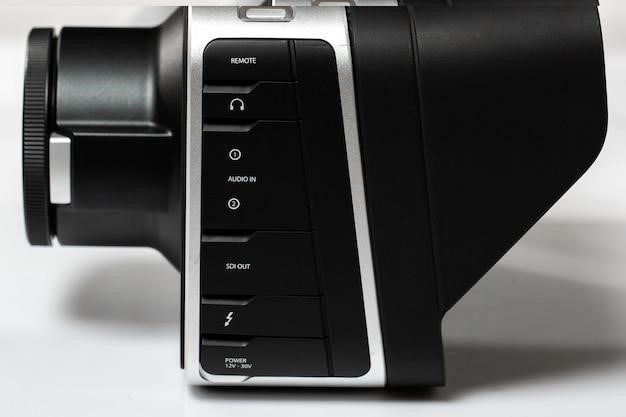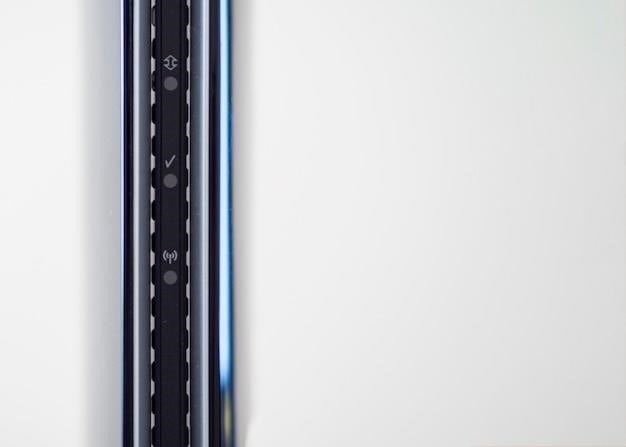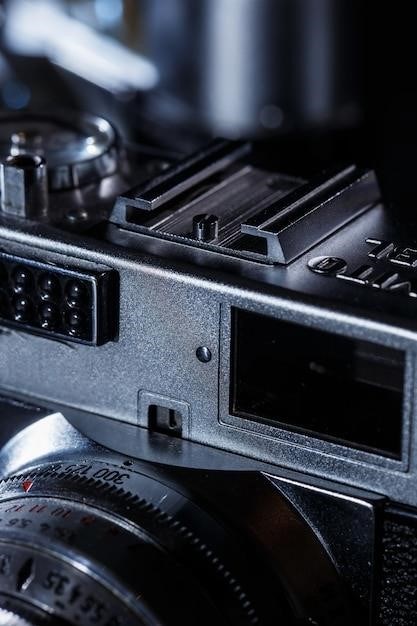Auto Manual Selector Switch⁚ A Comprehensive Guide
This guide explores auto manual selector switches, devices offering automatic and manual control options. We’ll cover their basic functionality, various types, and diverse applications across numerous industries, providing a complete understanding of their operation and selection.
Understanding the Basics
An auto-off-manual selector switch is a crucial electromechanical component that allows for the selection of operating modes in various systems. At its core, it provides a simple yet effective method to switch between automatic and manual control. The “auto” mode typically engages an automated system, often controlled by sensors or a programmable logic controller (PLC), while the “manual” mode allows for direct user intervention. The “off” position completely disconnects power, ensuring safety and preventing unintended operation. These switches are commonly used where both automated processes and manual overrides are necessary. The switch itself may be a rotary type, where a knob is turned to select the desired mode, or a push-button type with multiple positions. The internal mechanism uses contacts to connect or disconnect circuits based on the selected position, ensuring reliable mode switching.
Types of Auto Manual Selector Switches
Auto-off-manual selector switches come in various configurations to suit different applications and needs. Rotary switches offer a simple, intuitive interface with clearly marked positions for “Auto,” “Off,” and “Manual.” These are common in industrial control panels and machinery. Push-button switches provide an alternative, often featuring momentary or maintained contact actions, allowing for quick mode changes. The number of poles in a switch determines how many circuits it can control simultaneously; single-pole switches control one circuit, while multi-pole switches control multiple circuits with a single selector. The physical size and mounting style also vary, with options including panel-mount, surface-mount, and even miniature versions for space-constrained applications. Material choices range from robust plastics to more durable metals, depending on the environmental conditions and required durability. Specific features might include indicators (LEDs) to show the current operating mode or sealed designs for protection against dust and moisture.
Applications of Auto Manual Selector Switches
Auto-off-manual selector switches find widespread use in diverse applications requiring flexible control over electrical systems. Industrial machinery frequently employs these switches for manual overrides of automated processes, ensuring safety and operator control. HVAC systems often incorporate them to allow switching between automatic climate control and manual adjustments. Motor control is another key area; switches provide a means to start, stop, and select between automatic and manual operation of motors in pumps, fans, and other equipment. Robotics utilize these switches for transitioning between pre-programmed automated sequences and direct operator control; Testing and calibration equipment often uses auto-off-manual switches for setting parameters and executing automated test routines. Furthermore, various types of lighting systems might benefit from these switches, allowing for automated dimming or manual adjustment depending on the needs; The versatile nature of these switches makes them valuable components in a broad range of automated and manually operated systems.
Technical Specifications and Features
Understanding technical specifications is crucial for selecting the right auto-off-manual selector switch. Key factors include voltage and current ratings, along with the number of poles and switching positions.
Common Configurations (e.g., Auto/Off/Manual)
Auto-off-manual selector switches come in various configurations tailored to specific needs. The most common is the three-position design⁚ Auto, Off, and Manual. The “Auto” position enables automatic operation, often controlled by a separate system or sensor. Switching to “Off” completely disconnects power, ensuring safety and preventing unintended operation. The “Manual” position allows direct user control, overriding the automatic system for precise adjustments or troubleshooting. Other configurations may include additional positions, such as high/low settings for speed or power control, or variations like open/closed for valve control. The choice depends on the application’s complexity and the level of control required. Understanding these configurations is crucial for selecting the appropriate switch for a particular application. Improper configuration can lead to operational errors or safety hazards. Therefore, careful consideration is necessary when choosing a selector switch for integration into a system.
Electrical Ratings (Voltage, Current, etc.)
Understanding the electrical ratings of an auto-off-manual selector switch is paramount for safe and effective operation. Key specifications include voltage and current ratings, which define the maximum voltage and current the switch can safely handle. Exceeding these limits can lead to overheating, damage to the switch, or even fire hazards. The voltage rating specifies the maximum voltage the switch can withstand without breaking down, while the current rating indicates the maximum current it can continuously conduct without overheating. Other important considerations include the type of current (AC or DC), the switching frequency, and the contact resistance, which impacts the efficiency and power loss within the switch. The IP rating, indicating the level of protection against dust and water ingress, is also crucial for ensuring reliability in various environments. Always verify that the switch’s electrical ratings align with the application’s requirements to ensure its safe and efficient operation. Failure to do so could result in malfunction or safety hazards.
Mounting and Installation
Proper mounting and installation of an auto-off-manual selector switch are crucial for ensuring its reliable performance and safety. The mounting method varies depending on the switch’s design and the application’s requirements. Common methods include panel mounting, where the switch is secured to a control panel using screws or other fasteners, and surface mounting, where the switch is attached directly to a surface. Before installation, carefully review the manufacturer’s instructions, paying close attention to the recommended mounting hardware and techniques. Ensure the mounting surface is stable and capable of supporting the switch’s weight and any potential vibrations. Accurate wiring is crucial; use appropriate wire gauges and connectors to prevent overheating or loose connections. Grounding the switch properly is essential for safety to prevent electrical shocks. After installation, visually inspect the connections and mounting to ensure everything is secure and properly aligned. Testing the switch’s functionality after installation is highly recommended to confirm correct operation before integrating it into the system.
Selection and Usage
Choosing the right auto-off-manual selector switch involves considering factors like voltage, current ratings, and the number of poles required for your specific application. Correct wiring is paramount for safe and effective operation.
Choosing the Right Switch for Your Needs
Selecting the appropriate auto-off-manual selector switch necessitates careful consideration of several key factors. Firstly, accurately determine the required voltage and current ratings to ensure compatibility with your system. Overlooking this crucial step can lead to malfunction or even damage to connected components. The number of poles is another critical aspect; a single-pole switch controls one circuit, while multiple-pole switches manage multiple circuits simultaneously. Consider the type of mounting required—panel mount switches are commonly used for integrated control panels, whereas other types might suit different applications. Think about the desired switching mechanism; rotary switches offer a simple and reliable method of selection, while push-button switches might be preferred for ease of use. Environmental conditions, such as temperature and humidity, should also be factored in to choose a switch with the appropriate level of protection. Finally, the switch’s physical size and overall aesthetics should be considered to ensure seamless integration into the existing setup. Thorough evaluation of these specifications guarantees optimal performance and long-term reliability.
Wiring Diagrams and Connections
Correct wiring is paramount for the safe and effective operation of an auto-off-manual selector switch. Consult the manufacturer’s provided wiring diagram, which will detail the specific connections for each terminal. These diagrams typically show the connections for the power supply, load, and control circuits. Accurate identification of each terminal is critical; incorrect wiring may lead to malfunction or even equipment damage. Pay close attention to the labeling of terminals, often designated with letters or numbers corresponding to the diagram. Before making any connections, ensure power is completely disconnected to prevent electrical shock. Use appropriately sized wires and connectors to maintain electrical safety and prevent overheating. Once connections are made, visually inspect them to confirm correct placement and secure connections. Always refer to relevant safety guidelines and standards during the wiring process. Testing the connections before powering up the system is a crucial step to verify correct functionality and prevent potential issues.
Troubleshooting Common Issues
Troubleshooting an auto-off-manual selector switch often begins with a visual inspection. Check for loose connections, damaged wires, or any signs of physical damage to the switch itself. If the switch fails to operate in any mode (auto, off, or manual), verify power supply continuity to the switch using a multimeter. If power is present, test the switch’s internal circuitry for continuity between terminals using an ohmmeter, following the manufacturer’s instructions and safety precautions. A faulty switch might require replacement. If the switch operates intermittently, investigate the possibility of loose or corroded connections at the terminals. Clean these connections thoroughly and ensure they are properly secured. Check for any obstructions hindering the switch’s mechanical operation. If the problem persists after these steps, further investigation into the control circuitry or other connected components may be necessary. Remember, always disconnect power before undertaking any internal checks or repairs.
Maintenance and Repair
Regular inspection, cleaning, and timely component replacement are crucial for extending the lifespan of your auto-off-manual selector switch, ensuring reliable and safe operation.
Regular Inspection and Cleaning
Regular inspection of your auto-off-manual selector switch is vital for preventing potential issues and ensuring its continued reliable performance. Start by visually examining the switch for any signs of damage, such as cracks, loose components, or excessive wear on the switch’s casing or internal mechanisms. Pay close attention to the switch’s terminals, looking for any signs of corrosion, overheating, or loose connections. These issues can lead to malfunction or even electrical hazards. A simple visual inspection can often identify problems early, allowing for timely maintenance or repairs before they escalate into more serious issues; Regular cleaning is also important. Accumulated dust and debris can interfere with the switch’s operation and lead to premature wear. Use a soft brush or compressed air to carefully remove any dirt or dust from the switch’s surface and accessible internal components. Avoid using harsh chemicals or solvents, as these could damage the switch’s materials and affect its performance. A clean switch not only operates better but also has a much longer lifespan.
Identifying and Replacing Faulty Components
Identifying faulty components in an auto-off-manual selector switch often begins with a thorough inspection. Look for visible signs of damage like burn marks, cracks, or loose connections. Use a multimeter to test the switch’s continuity and resistance, comparing readings to the manufacturer’s specifications. If a component fails these tests, it’s likely faulty. For example, a faulty switch may show an unexpected resistance reading or no continuity at all. Replacing faulty components requires careful attention. Always disconnect power before working on the switch. Identify the faulty component, noting its specifications (voltage, amperage, etc.). Obtain a replacement part from a reputable supplier, ensuring compatibility with your switch model. Follow the manufacturer’s instructions for component replacement. Take photos or make notes during disassembly to aid in reassembly. After replacement, meticulously reassemble the switch, ensuring all connections are secure and properly insulated. Retest the switch thoroughly to confirm functionality and safety before restoring power.
Extending the Lifespan of Your Switch
Prolonging the operational life of your auto-off-manual selector switch involves proactive maintenance and careful usage. Regular visual inspections can reveal potential problems early on. Look for signs of wear, loose connections, or physical damage. Keep the switch clean, free from dust and debris, to prevent overheating and ensure proper functionality. Avoid exceeding the switch’s rated voltage and current capacity. Overloading the switch can lead to overheating and premature failure. Use the switch appropriately; avoid forcing the switch into positions it’s not designed for. Operate the switch smoothly, avoiding abrupt movements that could damage internal components. Store the switch in a dry, controlled environment when not in use; extreme temperatures and humidity can degrade its performance. Regular lubrication (where applicable) can reduce friction and wear on moving parts, ensuring smoother operation and a longer lifespan. Consider scheduled preventative maintenance, such as contact cleaning or lubrication, according to the manufacturer’s recommendations. Following these guidelines will help maintain optimal performance and extend the useful life of your selector switch significantly.


